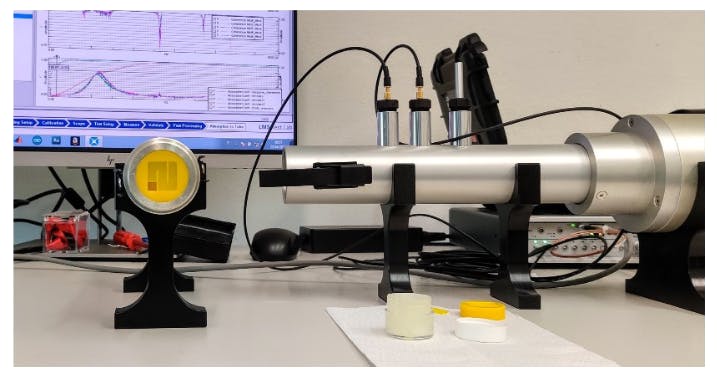Table of Links
Abstract and 1 Introduction
2 Unit cell design and analysis
3 Unit cell experimental and numerical characterization
4 Rainbow AM labyrinthine panel
4.1 Panel design and fabrication
4.2 FE model of the AM panel
4.3 AM panel characterization
4.4 AM panel sound absorption results
5 Numerical evaluation of different labyrinthine sound absorption panel solutions
5.1 Macrocell with backing cavity
5.2 Results
Conclusions, Acknowledgements, and References
Appendix I
3 Unit cell experimental and numerical characterization
In order to validate the design predictions and experimentally assess the efficiency of the UC subwavelength sound wave absorption, we first perform normal incidence measurements on various types of UCs in an impedance tube. The UCs consist of a square cavity inside a solid cylinder, in which internal solid walls form a labyrinthine pattern. The UC samples for impedance tube measurements are manufactured in PLA using a Dremel Digilab filament 3D printer and in VeroYellow using a Stratasys J750 FDM 3D printer. The two polymers have similar mechanical characteristics, which are compatible with the rigid wall hypothesis used in simulations.
The impedance tube setup is depicted in Fig. 4. The impedance measurements are performed in accordance with ISO 10534-2 [41] and ASTM E1050-19 [42] (two-microphone technique) regulations, in order to measure the normal incidence absorption coefficient (α0), calculated for a normally impinging pressure wave [43]. Measurements are performed using a HW-ACT-TUBE and -STL (Siemens, Munich, Germany), which has a diameter of 35 mm and is equipped with two 1/4 ” flush mounted GRAS 46BD microphones (GRAS, Holte, Denmark) and a white noise source, i.e., a 2″ aluminium driver. The method allows to obtain accurate sound pressure amplitude and phase measurements in the whole frequency range of interest, i.e., 100-5000 Hz [43], with a spectral resolution of 2 Hz. The sample holder consists of a tube with a sliding rigid piston. A specific plastic sample holder is used as shown in Fig. 4b. The method allows a better control on the positioning of the different samples into the flanged sample holder of the tube. The 3D printed samples have a reflective overall surface and a diameter allowing for tolerances such that the circumferential effect discussed in [44] can be considered negligible. The effect of any possible irregularity in the samples, and in particular at the edges, is taken into consideration by repeating the tests for each structure with three nominally identical samples, to evaluate reproducibility. Temperature and atmospheric pressure are monitored by calibrated transducers.
Repeated measurements are performed on each UC, to assess reproducibility. The acoustic pressure is measured by two microphones set at a distance of 29 mm from each other along the length of the tube. The absorption coefficient spectrum α(𝑓) of the UC is obtained using the transfer function method [32]. This procedure is repeated several times for each experimental configuration to reduce dispersion in the measurements.
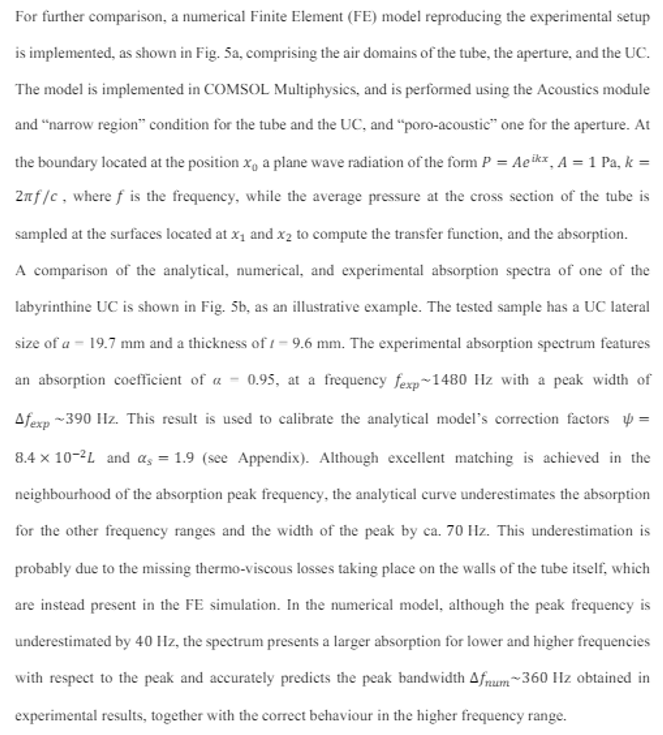
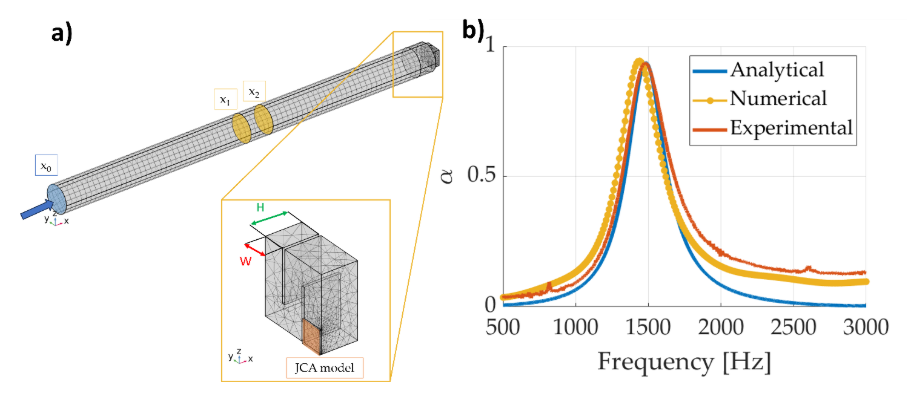
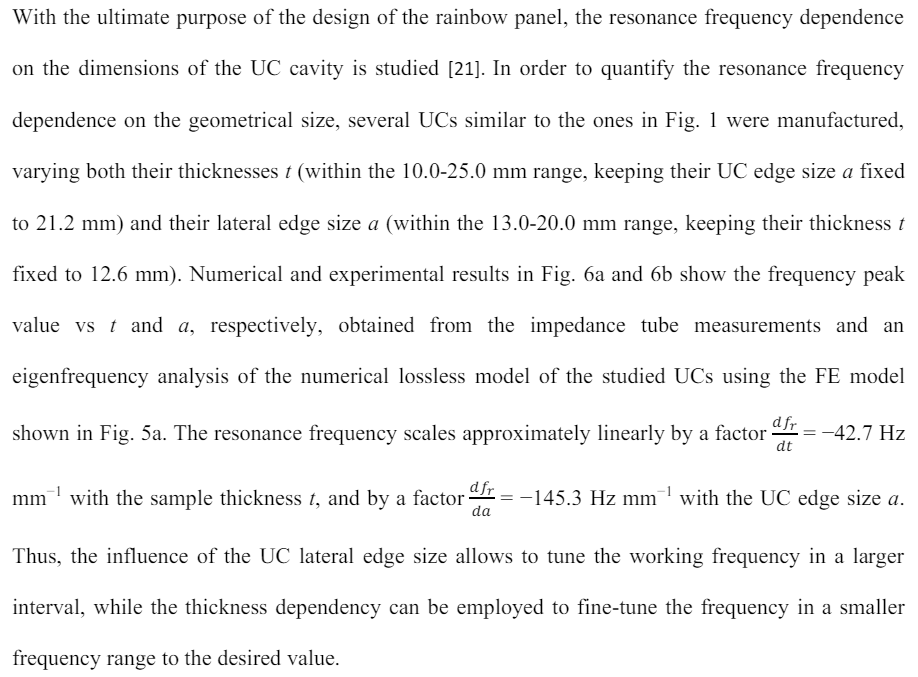
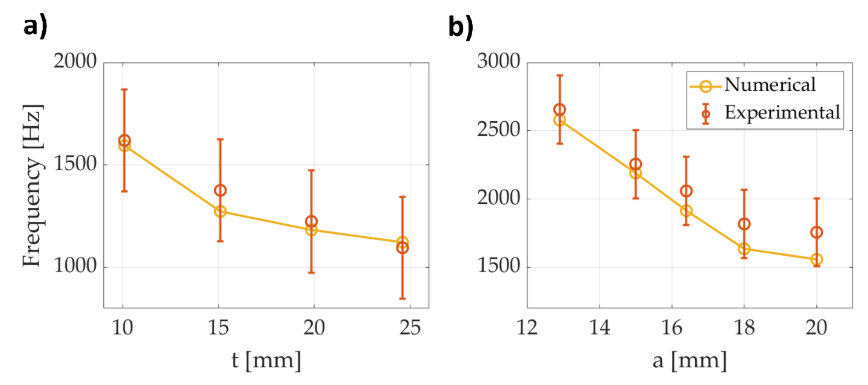
:::info
This paper is available on arxiv under CC BY-NC-ND 4.0 DEED license.
:::
:::info
Authors:
(1) F. Nistri, Department of Applied Science and Technology, Politecnico di Torino, Torino, Italy and Politecnico di Milano, Milano, Italy;
(2) V. H. Kamrul, Politecnico di Milano, Milano, Italy;
(3) L. Bettini, Politecnico di Milano, Milano, Italy;
(4) E. Musso, Politecnico di Milano, Milano, Italy;
(5) D. Piciucco, Politecnico di Milano, Milano, Italy;
(6) M. Zemello, Politecnico di Milano, Milano, Italy;
(7) A.S. Gliozzi, Department of Applied Science and Technology, Politecnico di Torino, Torino, Italy;
(8) A.O. Krushynska, Faculty of Science and Engineering, University of Groningen, Groningen, The Netherlands;
(9) N. M. Pugno, Laboratory for Bioinspired, Bionic, Nano, Meta Materials & Mechanic, University of Trento, Trento, Italy and School of Engineering and Materials Science, Queen Mary University of London, United Kingdom;
(10) L. Sangiuliano, Phononic Vibes s.r.l., Milano, Italy;
(11) L. Shtrepi, Department of Energy “Galileo Ferraris”, Politecnico di Torino, Torino, Italy;
(12) F. Bosia, Department of Applied Science and Technology, Politecnico di Torino, Torino, Italy and a Corresponding Author ([email protected]).
:::

